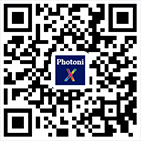Non-local metasurface generates highly efficient transmission vortex by intrinsic singularity and generalized kerker effect
doi: 10.1186/s43074-025-00166-7
Non-local metasurface generates highly efficient transmission vortex by intrinsic singularity and generalized kerker effect
-
摘要: In response to the growing demands of advanced 5G/6G communication technologies, millimeter-wave vortex beams have emerged as a promising solution to increase channel capacities. This paper introduces a novel and efficient method for vortex beam generation by leveraging the intrinsic singularities of dipole scatterers and enhancing their performance through non-local coupling. We demonstrate that the intrinsic singularities—amplitude-zero points in the scattering patterns of electric dipole (ED) and magnetic dipole (MD) resonances–enable the conversion of spin angular momentum (SAM) into orbital angular momentum (OAM), generating a vortex electric field distribution. By arranging these dipolar units into a periodic array, we establish a dual-resonance non-local metasurface that improves directivity and efficiency via non-local collective interactions and the generalized Kerker effect. This configuration significantly enhances forward scattering, producing highly directional vortex beams. Our experimental results show that the non-local metasurface achieves a vortex conversion efficiency approximately 2.2 times higher than that of a reference structure around 40 GHz. This alignment-free, high-efficiency solution offers great potential for expanding millimeter-wave communication capacity and advancing photonic applications.Abstract: In response to the growing demands of advanced 5G/6G communication technologies, millimeter-wave vortex beams have emerged as a promising solution to increase channel capacities. This paper introduces a novel and efficient method for vortex beam generation by leveraging the intrinsic singularities of dipole scatterers and enhancing their performance through non-local coupling. We demonstrate that the intrinsic singularities—amplitude-zero points in the scattering patterns of electric dipole (ED) and magnetic dipole (MD) resonances–enable the conversion of spin angular momentum (SAM) into orbital angular momentum (OAM), generating a vortex electric field distribution. By arranging these dipolar units into a periodic array, we establish a dual-resonance non-local metasurface that improves directivity and efficiency via non-local collective interactions and the generalized Kerker effect. This configuration significantly enhances forward scattering, producing highly directional vortex beams. Our experimental results show that the non-local metasurface achieves a vortex conversion efficiency approximately 2.2 times higher than that of a reference structure around 40 GHz. This alignment-free, high-efficiency solution offers great potential for expanding millimeter-wave communication capacity and advancing photonic applications.
-
Key words:
- Intrinsic singularity /
- Generalized Kerker effect /
- Non-local coupling /
- Vortex beam









 下载:
下载:



